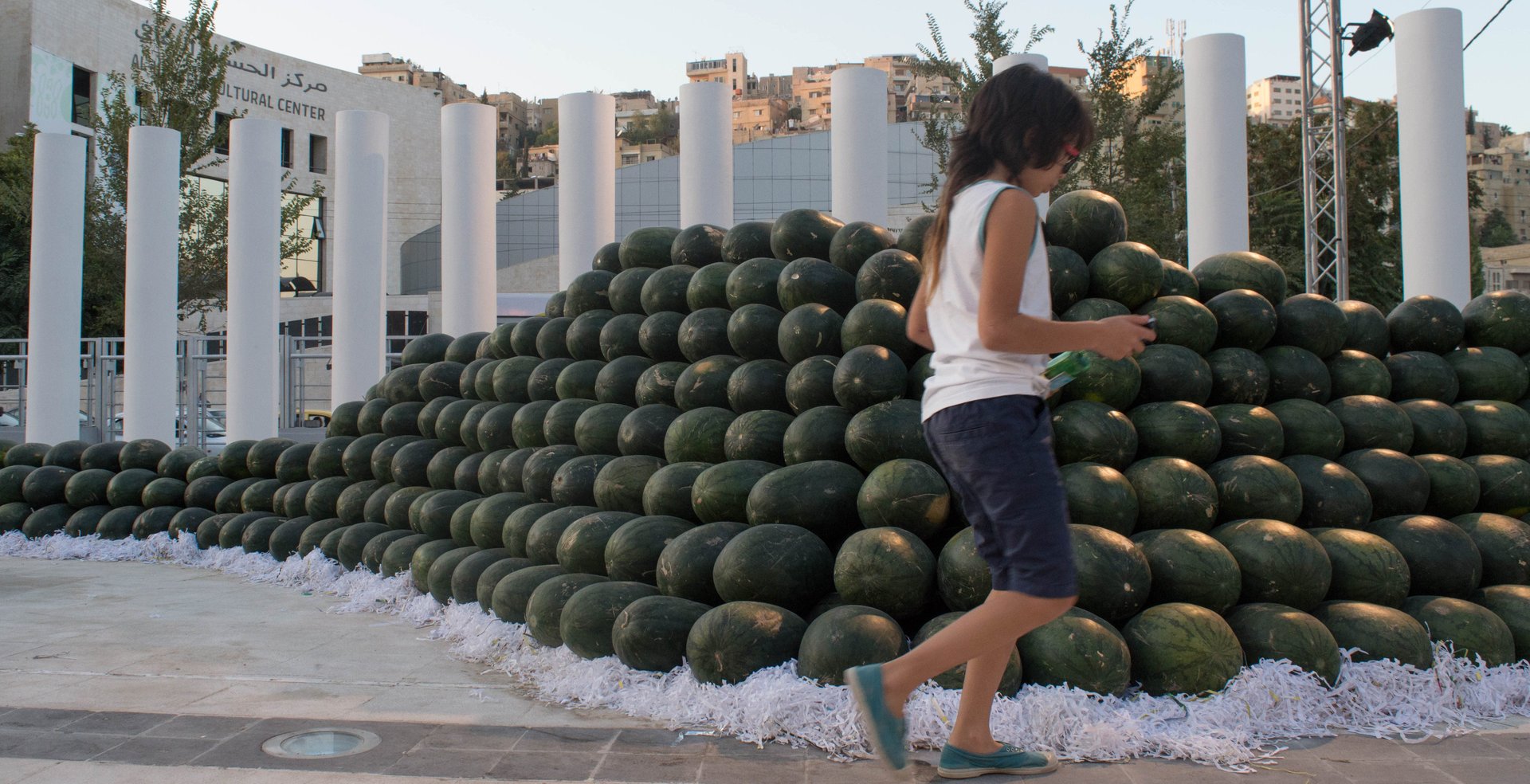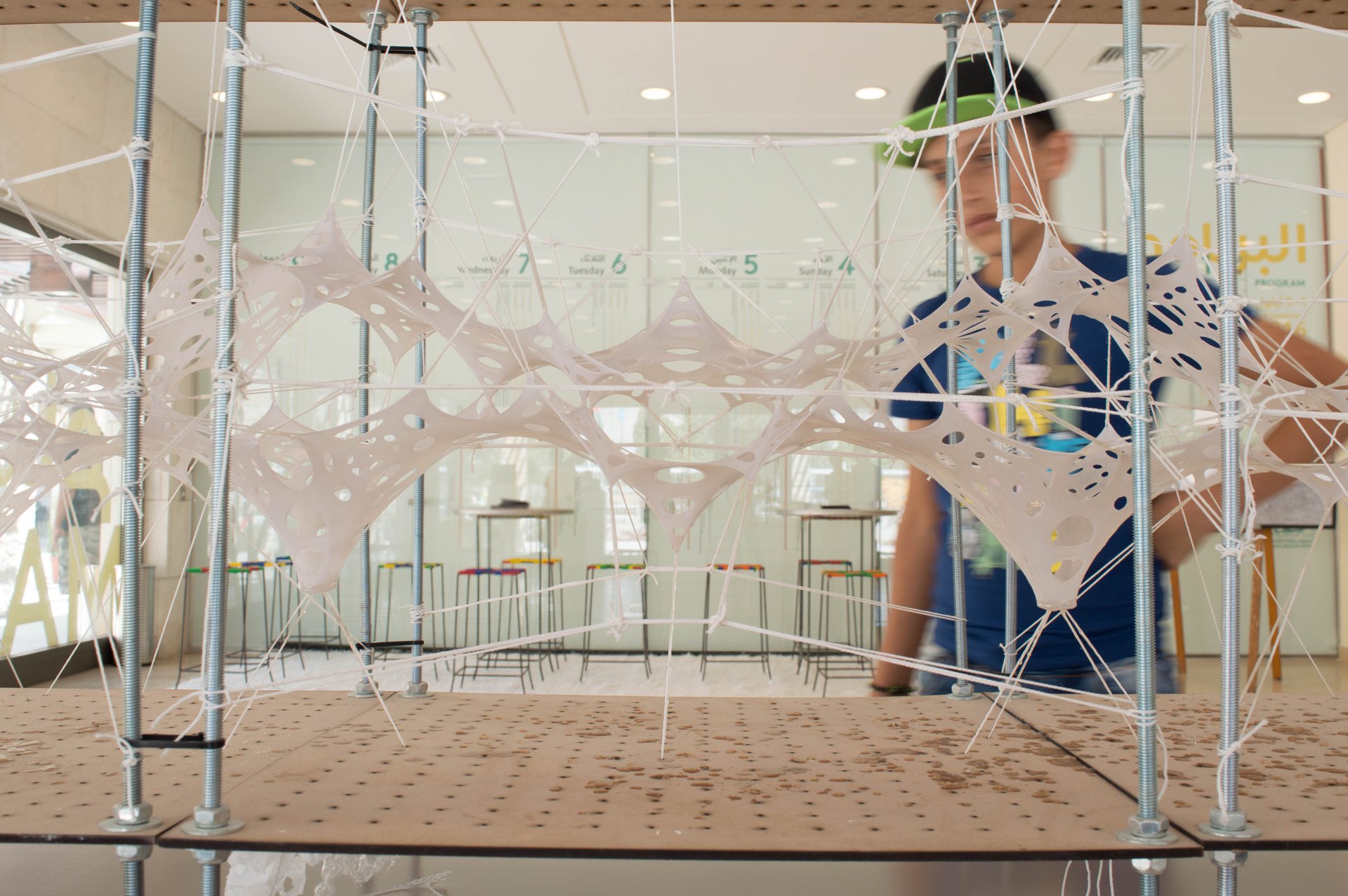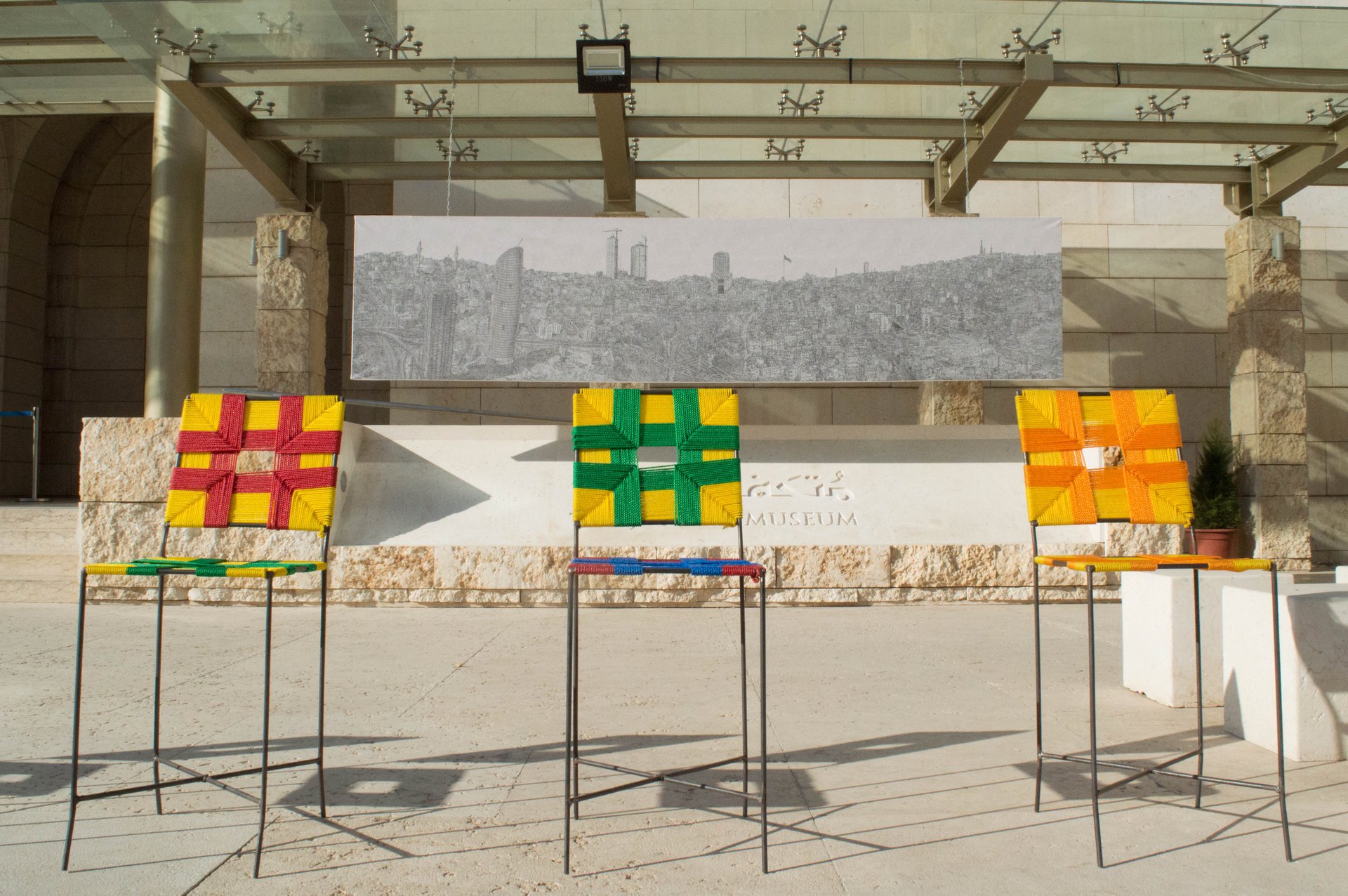Fruit vendors and high-end designers share the floor at Jordan’s first Design Week
Stacked in a bright courtyard in the wadi of downtown Amman, curving hills of watermelons formed a topographical map. Onlookers stopped to pose for photos, tapping the fruits to check their ripeness, as excited children ran between the stacks.


Stacked in a bright courtyard in the wadi of downtown Amman, curving hills of watermelons formed a topographical map. Onlookers stopped to pose for photos, tapping the fruits to check their ripeness, as excited children ran between the stacks.
This wasn’t a pop-up fruit market, but rather a centerpiece of Jordan’s first design week, a nine-day event that runs through Sept 9. Inspired by the hills of Amman and designed by renowned Lebanese architect Hashim Sarkis, the watermelon map was brought to life by Fayez Abu Awwad and Khdeir Abu Huwash, watermelon traders and respected fruit stackers who have spent decades in Jordan’s souqs. The pair provided the fruit for the installation and combined their expertise with Sarkis’ specifications to build it.
“Jordanians don’t know it’s summer until the watermelons arrive,” says Abu Awwad, who has been in the trade for 24 years. “Personally, I wasn’t surprised that the watermelons became art.” Sarkis calls Abu Awwad the “magician of stacking,” a master of the architecture of fruit displays.
The installation is just one example of Amman Design Week’s efforts to showcase the diverse creative identities of a country that has seen plenty of change, including rapid urbanization and, most recently, the arrival of more than 650,000 Syrian refugees.
“We’re in the center of downtown, in the heart of Amman,” says Design Week spokesperson Salwa Qattan. “We didn’t want people to come here and feel like they’re entering an aristocratic space.”

The festival, curated in part by architect Sahel Al Hiyari, is spread across three main locations and dozens of smaller venues, which teem with art inspired by the seemingly unexceptional threads of daily life in Amman. In one area, artist and scientist Sissel Tolaas has recreated and potted the smells of the city—from jasmine flowers to garbage—and used them to build a scent map. Farther downtown, artist and curator Dina Haddadin displays installations made from the orange tarpaulin and scaffolding used in construction sites, the material wrapped carefully around bridges and towers. The city’s national museum has been transformed into a “makerspace” that offers classes in 3D printing and features a “memory matrix” comprised of plexiglass “pixels.” Overall, Design Week’s organizers hope to surprise Jordanians with ingenious, elegant creations built from things they see in their daily lives.
“The whole idea comes from design crossing the boundaries—mental boundaries, geographic boundaries,” says Al Hiyari. “When these boundaries are transcended, we get something more unified.”

Design Week visitors are confronted with this vision of contrast as soon as they step into the Hangar, one of the festival’s main locations (outside of which sat the watermelon stacks). Strung from the Hangar ceiling is a tan, webbed funnel, made from enormous knitted tubes that visitors weave and peek through, posing for pictures. The piece is a collaboration between local fashion designer Raya Kassisieh and architect Nader Tehrani, and was knitted by women from small communities in 20 governorates in Jordan. After the installation is dismantled, the wool will be repurposed into blankets and distributed to refugee communities.
All over the city, forgotten and abandoned spaces have been revived for the festival. Raghadan terminal, which was built as a tourist hub but remained largely empty since its opening in 2007 in part due to lack of investment and poor planning, has been turned into a craft market selling, among other things, bean bags made from used plastic bags, phone cases featuring Palestinian embroidery, and slick notebooks printed on recycled paper. The Hangar, too, was originally built in the 1930s to house electricity generators and redeveloped into a public exhibition space last year.

This blurring of tradition, aesthetics and daily routine reflects modern Jordanian design, in which contemporary creators and traditional makers both inspire and challenge each other. Limits on resources and manufacturing, along with the shared geopolitical context of a changing Middle East have created a tight design community, Al Hiyari says.
One of Al Hiyari’s favorite pieces is The Glass Shaper, a pyramid of glassware stacked before a mirror that winks back refracted light. Its creator, Ahmad Jallouk, has run a small underwear shop in downtown Amman since the 1970s, and isn’t formally trained as a designer. But he spends his spare time turning discarded wine bottles, glasses, and even the bases of hookah pipes into unique pieces of art.
“I love every one of them,” Jallouk says of his creations.
Though the city’s first Design Week is fleeting—the watermelon stacks have already been dismantled, the fruit loaded onto trucks and sold at market—Al Hiyari hopes it will foster a collaboration that lasts long after the final installation comes down.
“Design is not only something restricted to designers,” he says. “It’s collaborative work, by people from different disciplines, and the results of these collaborations are the strongest. They’re the works that have meaning and soul.”
Correction: An earlier version of this article described architect Sahel Al Hiyari as the main curator of Amman Design Week. He is one of several curators of the event.